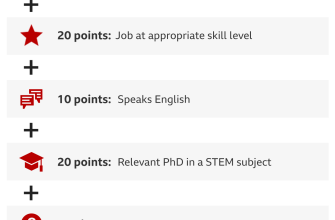Immigration rules and regulations can be complex and challenging to navigate, especially when it comes to applying for Indefinite Leave to Remain (ILR) in the UK. For those on an ICT Tier 2 visa, the path to ILR may seem particularly daunting. However, with the right information and guidance, it is possible to successfully transition from an ICT Tier 2 visa to ILR. This article serves as an ultimate guide to understanding the process, requirements, and eligibility criteria for the ICT Tier 2 to ILR application.
Understanding ILR and ICT Tier 2
Before delving into the specifics of the ICT Tier 2 to ILR application process, it’s essential to understand what these terms mean. ILR, or Indefinite Leave to Remain, is a form of UK immigration status that allows holders to live, work, and study in the UK without any time limit. It is often a crucial step towards British citizenship.
On the other hand, the ICT Tier 2 visa, or Intra-Company Transfer Tier 2 visa, is a type of UK work visa that allows multinational companies to transfer their existing employees from an overseas branch to a UK branch. This visa is temporary and does not lead directly to ILR. However, there are pathways available for ICT Tier 2 visa holders to switch to a different visa category that can lead to ILR, such as the Skilled Worker visa.
Eligibility Criteria for ILR
Before considering the transition from ICT Tier 2 to ILR, it’s crucial to understand the eligibility criteria for ILR. These include:
- Continuous residence in the UK for a certain period, typically five years.
- No serious criminal record or breaches of UK immigration rules.
- Passing the Life in the UK test, which assesses knowledge of British traditions, history, and values.
- Demonstrating a certain level of English language proficiency.
Transitioning from ICT Tier 2 to ILR
As mentioned earlier, the ICT Tier 2 visa does not lead directly to ILR. However, there are ways to transition from ICT Tier 2 to ILR. The most common pathway is to switch from an ICT Tier 2 visa to a Skilled Worker visa, and then apply for ILR after five years of continuous residence in the UK on a Skilled Worker visa.
Switching from ICT Tier 2 to Skilled Worker Visa
To switch from an ICT Tier 2 visa to a Skilled Worker visa, you must meet the following requirements:
- Have a job offer from a UK employer who is a licensed Skilled Worker sponsor.
- The job must meet the minimum skill and salary requirements.
- You must have a Certificate of Sponsorship from your employer.
- You must demonstrate a certain level of English language proficiency.
Once you have switched to a Skilled Worker visa, you can then apply for ILR after five years of continuous residence in the UK on this visa, provided you meet the eligibility criteria for ILR.
Application Process for ILR
The application process for ILR involves several steps:
- Completing the online application form.
- Providing evidence of your identity and immigration status, such as your passport and biometric residence permit.
- Providing evidence of continuous residence in the UK, such as utility bills, bank statements, or payslips.
- Passing the Life in the UK test and demonstrating English language proficiency.
- Paying the application fee and the Immigration Health Surcharge.
It’s important to note that the application process can be complex and time-consuming, and it’s recommended to seek legal advice if you’re unsure about any aspect of the process.
Conclusion
Transitioning from an ICT Tier 2 visa to ILR involves several steps and meeting various eligibility criteria. However, with careful planning and preparation, it is possible to navigate this process successfully. This guide provides a comprehensive overview of the process, but it’s always a good idea to seek professional advice tailored to your specific circumstances.








